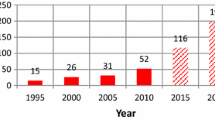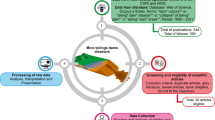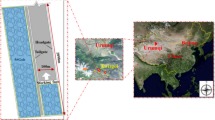Abstract
Ground control failures continue to be one of the leading causes of injuries and fatalities in underground coal mining. The roof, rib, floor, and pillars are four areas of potential ground failures that miners, engineers, and consultants are continually evaluating. Quite often, these four underground structures are evaluated independently. A recent push to consider them as a system and in a similar manner as design engineers evaluate mechanical systems has highlighted the need to fully understand the interrelationship among the roof, rib, floor, and pillar. This relationship combines the geometry of the mine layout, geological environment, installed support, and even the timing of the coal extraction. Several studies using field observations and instrumentation show that these relationships can be independent at times, while being dependent in other scenarios. Cases with good roof conditions while the rib and floor deteriorate are contrasted with cases where the roof, rib, and floor deteriorate at the same time. The presented cases in this study demonstrate the importance of understanding the geological environment and mine design to ensure that the proper support is installed.

















Similar content being viewed by others
References
Babcock Clarence O (1984) Constraint is the prime variable in pillar strength. Proceedings of the Fourth Conference on Ground Control in Mining (ICGCM)
Colwell M and Mark C (2005) Analysis and design of rib Support (ADRS)—a rib support design methodology for Australian collieries. In: Proceedings of the 24th International Conference on Ground Control in Mining. Morgantown, WV: West Virginia University, august 2–24, pp. 12–22
Colwell M, Frith R, Mark C (1999) Analysis of longwall tailgate serviceability (ALTS): a chain pillar design methodology for Australian conditions. NIOSH IC 9448. In: Proceedings of the second international workshop on coal pillar mechanics and design. Pittsburgh, USBM, pp 23–32
Esterhuizen GS, Gearhart DF, Klemetti T, Dougherty H, Van Dyke M (2019) Analysis of gateroad stability at two longwall mines based on field monitoring results and numerical model analysis. Int J Min Sci Technol 29(1):35–43
Heasley KA, Nandula A, and Tulu IB (2018) An area calculation of the ARBS support intensity. In: Proceedings of the 37th International Conference on Ground Control in Mining. Morgantown, WV: West Virginia University, July 24–26, pp. 19–23
Klemetti TM, Van Dyke MA, Compton CS, Tulu IB, Tuncay D and Wickling J (2019) Longwall gateroad yield pillar response and model verification—a case study. In: Proceedings of the 53rd US Rock Mechanics/Geomechanics Symposium. New York, June 23–26
Maleki H (2000) Case studies of progressive pillar failure in two mines using wide pillars. In: Proceedings of the 19th International Conference on Ground Control in Mining. Morgantown, WV: West Virginia University, July 24-26
Mark C, and Chase FE (1997) Analysis of retreat mining pillar stability. NIOSH IC 9446. In: Proceedings of the NIOSH technology transfer seminar. Pittsburgh: USBM, pp. 17–34
Mark C, Chase FE, and Molinda GM (1994) Design of longwall gate entry systems using roof classification. In: Proceedings of the U.S. Bureau of Mines Technology Transfer Seminar. Pittsburgh, PA: USBM, pp. 5-17
Mark C, Molinda GM, and Dolinar DR (2001) Analysis of roof bolt systems. In: Proceedings of the 20th International Conference on Ground Control in Mining. Morgantown, WV: West Virginia University, August 7–9, pp. 218–225
Mo S, Saydam S, and Tutuk K (2018) Management of floor heave at Bulga underground operations—a case study. In: Proceedings of the 37th International Conference on Ground Control in Mining. Morgantown: West Virginia University, July 24–26, pp. 122–130
Molinda G, Mark C, Bauer E, Babich D, and Pappas D (1998) Factors influencing intersection stability in U.S. coal mines. In: Proceedings of the 17th International Conference on Ground Control in Mining. Morgantown, WV: West Virginia University, august 4–6, pp. 267–275
MSHA (2013) Roof control plan approval and review procedures. Appendix O. MSHA Handbook Series PH13-V-4. U.S. Department of Labor, Mine Safety and Health Administration. p. 76–77
Obert L, Duvall WI (1967) Rock mechanics and the design of structures in rock. Wiley, New York
Su DWH and Hasenfus GJ (1997) Effects of in-seam and near-seam conditions and asymmetric pillar loading on coal pillar strength. In: Proceedings of the 16th International Conference on Ground Control in Mining. Morgantown: West Virginia University, July 24–26, pp. 327
Tulu IB, Klemetti T, Esterhuizen E, and Sumner J (2014) A case study of topography-related stress rotation effects on multi-seam stability. In: Proceedings of the 33rd International Conference on Ground Control in Mining. Morgantown: West Virginia University, July 30–august 1, pp. 1–7
Van Dyke M, Lu J, Su DWH, and Hasenfus G (2015) Transitional geology and its effects on development and longwall mining in the Pittsburgh Seam. In: Proceedings of the 34th International Conference on Ground Control in Mining. Morgantown: West Virginia University, July 28–30, pp. 309–317
Van Dyke MA, Klemetti TM, Tulu IB, and Tuncay D (2020) Moderate cover bleeder entry and standing support performance in a longwall mine: a case study. 2020 SME Annual Meeting and Exhibit. Denver, CO: Society for Mining, Metallurgy, & Exploration, SME Preprint 20–009
Acknowledgments
We would like to thank the coal mines who allowed us to conduct this research on behalf of the US Government. Access provided by CDC Center for Disease Control MS C04. On behalf of all authors, the corresponding author states that there is no conflict of interest.
Author information
Authors and Affiliations
Corresponding author
Ethics declarations
Disclaimers
The findings and conclusions in this report are those of the authors and do not necessarily represent the official position of the National Institute for Occupational Safety and Health, Centers for Disease Control and Prevention. Mention of any company or product does not constitute endorsement by NIOSH.
Additional information
Publisher’s Note
Springer Nature remains neutral with regard to jurisdictional claims in published maps and institutional affiliations.
Rights and permissions
About this article
Cite this article
Klemetti, T.M., Van Dyke, M.A., Evanek, N. et al. Insights into the Relationships Among the Roof, Rib, Floor, and Pillars of Underground Coal Mines. Mining, Metallurgy & Exploration 38, 531–538 (2021). https://doi.org/10.1007/s42461-020-00313-7
Received:
Accepted:
Published:
Issue Date:
DOI: https://doi.org/10.1007/s42461-020-00313-7




